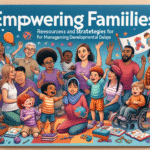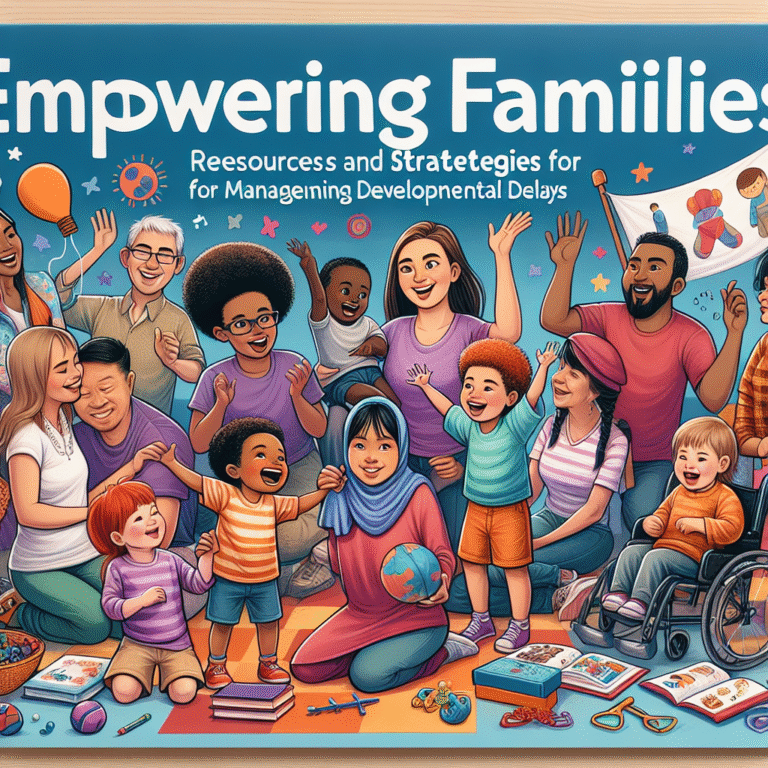
Introduction
Parenting is an intricate tapestry woven from love, discipline, and the myriad choices we face every day. As each child is unique, the approach we take in raising them must also be tailored to their distinct needs. Navigating Parenting Styles: Finding What Works for You and Your Child is not just about deciding on a method; it’s about understanding the underlying principles that shape those methods and how they can be adapted to foster a nurturing environment. In this article, we’ll explore various parenting styles, illuminating the distinct advantages and challenges of each, in hopes of guiding you toward a style that’s as unique as your child.
Understanding Parenting Styles
The Four Main Types of Parenting Styles
Authoritative Parenting
Characterized by high responsiveness and high demands, authoritative parenting is often seen as the most effective approach. Parents set clear expectations while also being supportive and nurturing.- Pros: Encourages independence, promotes self-regulation, and helps develop social skills.
- Cons: Consistency is crucial; fluctuations in rules can be confusing.
Authoritarian Parenting
An authoritarian style emphasizes obedience and discipline. Parents establish strict rules and expect compliance without question.- Pros: Clear rules can create a structured environment.
- Cons: May lead to children feeling less independent and less expressive.
Permissive Parenting
Permissive parents are warm and indulgent but place few demands on their children. They are more like friends than authority figures.- Pros: Fosters creativity and spontaneity.
- Cons: Can lead to issues with self-discipline and boundaries.
Neglectful Parenting
This style is characterized by a lack of responsiveness and demands. Neglectful parents may be indifferent or unaware of their child’s needs.- Pros: Very little pressure on the child.
- Cons: Can lead to feelings of abandonment and anxiety.
The Importance of Flexibility
While these classifications can help us make sense of our parenting approaches, the journey of Navigating Parenting Styles: Finding What Works for You and Your Child requires flexibility. Each child is distinct, and their needs may shift due to developmental changes, social interactions, or personal experiences.
Real-Life Applications: Case Studies
Case Study 1: The Authoritative Approach
Background: Emma, a 10-year-old, was thriving under her parents’ authoritative style. They set boundaries regarding screen time—two hours on weekends and one hour on weekdays—while also encouraging her to express her opinions and feelings.
Analysis: Emma excelled in her studies and friendships, attributed to the balance of structure and emotional support her parents provided. This case illustrates that establishing clear rules doesn’t stifle a child’s independence; rather, it encourages it.
Case Study 2: Navigating Authoritarian Tendencies
Background: Michael, a teenager, was raised in a strict authoritarian home. His parents enforced curfews, limited social interactions, and prioritized obedience above all.
Analysis: While Michael performed well academically, he struggled with anxiety and had difficulty making decisions. This case highlights the potential drawbacks of an authoritarian approach, particularly when emotional intelligence is undervalued.
Table: Parenting Styles at a Glance
| Parenting Style | Responsiveness | Demands | Pros | Cons |
|---|---|---|---|---|
| Authoritative | High | High | Independence, self-regulation | Consistency is crucial |
| Authoritarian | Low | High | Structure and clarity | Restriction of autonomy |
| Permissive | High | Low | Creativity and spontaneity | Lack of discipline |
| Neglectful | Low | Low | Freedom from pressure | Feelings of abandonment |
Finding What Works for You and Your Child
Consider Your Child’s Temperament
Understanding your child’s temperament is vital in Navigating Parenting Styles: Finding What Works for You and Your Child. Resources like the "Easy" and "Difficult" child classifications can help you identify how best to interact with them.
- Easy Children: Often adaptable and calm, responding well to authoritative styles.
- Difficult Children: Need clear boundaries; may require more structure or a blend of styles.
Communication: The Heart of Parenting
Effective communication fosters understanding and nurtures trust. Establish routines that encourage dialogue; mealtime discussions or bedtime reflections can become essential outlets for your child to share their thoughts.
Involve Your Child in the Decision-Making Process
Empower your child by allowing them to contribute to rules and consequences. For example, if a child suggests a change in bedtime during the weekend, discuss the pros and cons together. This not only eases compliance but enhances their sense of autonomy.
Adapting Your Approach
As your child grows, so too will their needs. Regularly assess your parenting approach and be open to change. Here are some actionable strategies:
- Reflect on Your Parenting Style: Take stock of your tendencies. Are you overly lenient or excessively strict?
- Seek Feedback: Ask your child how they feel about your approach. Their feedback can provide insights you may not have considered.
- Educate Yourself: Use resources like books, parenting classes, or consult other parents. Continual education can open your eyes to new strategies that resonate with your unique family dynamics.
Conclusion
Navigating Parenting Styles: Finding What Works for You and Your Child is a highly personal journey. By understanding the various approaches, recognizing your child’s unique needs, and remaining adaptable, you can create a supportive environment that nurtures their growth. Remember, parenting is not about perfection; it’s about connection, empathy, and continual learning. Embrace the ebb and flow of this remarkable journey, and let love guide you.
FAQs
1. What is the best parenting style?
There isn’t a one-size-fits-all answer. The authoritative style is often regarded as the most beneficial, promoting independence while maintaining structure. However, the best approach depends on your child’s temperament and needs.
2. How can I be flexible in my parenting style?
Being flexible means being open to change. Regularly assess your parenting decisions, communicate with your child, and adapt your approach based on their feedback and development.
3. How can I encourage independence in my child?
Provide opportunities for choice, encourage decision-making, and gradually increase their responsibilities. Using an authoritative approach often facilitates this independence effectively.
4. What are the signs of a neglectful parenting style?
Signs include a lack of engagement, unresponsiveness to a child’s emotional needs, and minimal expectations or boundaries. This can lead to negative outcomes like anxiety and feelings of isolation in children.
5. How can I mix different parenting styles?
While blending different styles can be effective, do so mindfully. For example, a largely authoritative approach can be complemented with permissiveness during activities that foster creativity, ensuring the balance remains.
Navigating the complex world of parenting is a journey filled with challenges and joys. By actively engaging in the process, you can cultivate a loving and supportive environment that caters to the needs of your child and fosters their growth into a confident, capable individual.















